You're using an outdated browser. Please upgrade to a modern browser for the best experience.

Submitted Successfully!
Thank you for your contribution! You can also upload a video entry or images related to this topic.
For video creation, please contact our Academic Video Service.
| Version | Summary | Created by | Modification | Content Size | Created at | Operation |
|---|---|---|---|---|---|---|
| 1 | Waheb A. Jabbar | + 2593 word(s) | 2593 | 2022-01-11 04:23:46 | | | |
| 2 | Yvaine Wei | + 3 word(s) | 2596 | 2022-01-21 01:47:04 | | |
Video Upload Options
We provide professional Academic Video Service to translate complex research into visually appealing presentations. Would you like to try it?
Cite
If you have any further questions, please contact Encyclopedia Editorial Office.
A. Jabbar, W. LoRaWAN Technology. Encyclopedia. Available online: https://encyclopedia.pub/entry/18542 (accessed on 22 December 2025).
A. Jabbar W. LoRaWAN Technology. Encyclopedia. Available at: https://encyclopedia.pub/entry/18542. Accessed December 22, 2025.
A. Jabbar, Waheb. "LoRaWAN Technology" Encyclopedia, https://encyclopedia.pub/entry/18542 (accessed December 22, 2025).
A. Jabbar, W. (2022, January 20). LoRaWAN Technology. In Encyclopedia. https://encyclopedia.pub/entry/18542
A. Jabbar, Waheb. "LoRaWAN Technology." Encyclopedia. Web. 20 January, 2022.
Copy Citation
Low-power wide-area network (LPWAN) technologies play a pivotal role in IoT applications, owing to their capability to meet the key IoT requirements (e.g., long range, low cost, small data volumes, massive device number, and low energy consumption). Between all obtainable LPWAN technologies, long-range wide-area network (LoRaWAN) technology has attracted much interest from both industry and academia due to networking autonomous architecture and an open standard specification.
IoT
LPWAN
LoRa
LoRaWAN
1. Introduction
The IoT and M2M devices are connected via low-power wide-area network (LPWAN) technologies wirelessly. They can react, sense their environment, and turn on anytime and anywhere to update data in real time to the cloud [1][2]. LPWANs are meant to solve several problems with existing short-range and communication cellular network technologies to address the IIoT applications. Massive IoT devices are connected in various applications (Figure 1) such as smart buildings, smart meters, smart agriculture, capillary networks, remote health care, connected cars, smart streets, traffic safety and control, remote manufacturing, smart grids, logistics, tracking, and fleet management [3][4][5].

Figure 1. Variety of LPWAN applications.
Current LPWAN technologies can be apportioned to three categories of networks according to their needs for additional infrastructure: (1) based on a cellular infrastructure such as narrowband IoT (NB-IoT) [6][7] and (2) employing a third-party infrastructure such as SigFox [8], although autonomous LPWANs do not need any third-party infrastructure such as long range (LoRa) or long-range wide-area networks (LoRaWANs) [9].
For the first category, cellular technology-based LPWANs have a wide converge area, high capacity, long battery life, quality of service (QoS) provisions, and security. This type of LPWAN can be classified further into three main types: NB-IoT, LTE-M (Cat-M1), and extended coverage GSM IoT (EC-GSM-IoT). Figure 2 compares the main features of the three types of narrowband technologies. However, such networks do not use a license-free frequency band, are operated by commercialized networks based on data subscription, and are controlled by the mobile operator companies. It is not cost-effective in the long term due to the continuous subscription fees for the cellular network operators. Thus, it does not meet the standalone operation requirements, should follow the conditions of the operator company in terms of coverage availability, service cost, and number of connected devices, and cannot handle the heavy interference wave of IoT devices due to the dense population of cellular devices [10].
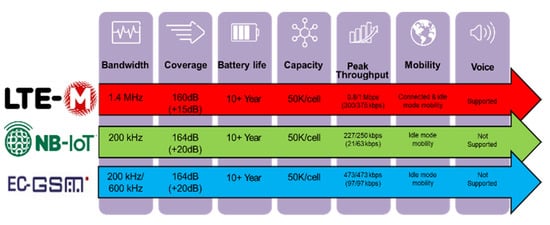
Figure 2. Types of cellular-based LPWAN technologies.
SigFox [8] and Telensa [11] are patented networks for the second category as service providers. The growth of SigFox started a speedy innovation cycle that raised the competition between various LPWAN technologies like LoRaWAN, LTE-M, and NB-IoT. The lack of fitting IoT standards and technologies encourages the development of such focused networks as SigFox, which is mainly developed for low data rate M2M IoT applications. Both SigFox and Telensa are similar to cellular networks that connect remote devices using ultra narrowband (UNB) technology. On the other hand, Ingenu Random Phase Multiple Access (RPMA) operates at the 2.4-GHz band. It is in the task group of IEEE 802.15.4 K as a founding member. Ingenu suffers interference from other technologies like Wi-Fi at high frequencies, with its propagation loss increasing. Furthermore, it utilizes RPMA modulation, including the coverage and higher link budget with high power consumption.
LoRa/LoRaWAN is open-source technology that can set up a private network autonomously and without a third-party infrastructure at a low cost. In contrast to SigFox and NB-IoT, LoRaWAN allows for the development of private networks and simple integration with a wide range of global network platforms (e.g., The Things Network). Because of its open access specs, LoRaWAN has piqued the curiosity of the research community almost from the moment it was introduced to the market. Despite different LPWAN family technologies, this paper mainly focuses on the recently proposed solutions to develop LoRa/LoRaWAN technology. Among all LPWAN technologies, LoRa has been chosen, depending on its market penetration and its enormous applications in industry, education, and communities. LoRa is a physical layer with low-energy and long-range communication technology operating in unlicensed radio bands at the sub-gigahertz level. LoRaWAN is the medium access control (MAC) protocol for the datalink layer and network layer on LoRa, backed and developed as a standard by the LoRa Alliance [12]. These features make LoRa networks a strong candidate for diverse IoT application deployments such as industrial sensor communications, smart cities, smart buildings, water quality measurement, remote environmental monitoring, smart meters, and intelligent agriculture.
2. LPWAN IoT Technologies
The crucial features of LPWAN technologies are a tremendous number of distributed devices across vast environmental distances with low-energy connectivity and unprecedented low costs.
2.1. NB-IoT
NB-IoT is 3GPP or 4GPP wireless access as a narrowband LPWAN technology that can collaborate in LTE or GSM under licensed frequency bands to achieve excellent performance. NB-IoT dominates a frequency bandwidth of 200 kHz for downlink and uplink communication [7], and its protocol is based on the LTE communication protocol. Thus, several concepts and building units of LTE’s physical and upper protocol layers are reprocessed by NB-IoT’s physical and upper protocol layers. In LTE M (Cat M1), the device receives a portion of the LTE carrier, as well as devices that are multiplexed across the LTE carrier, and the device takes advantage of the full leveraging capacity of the wideband LTE carrier. NB-IoT devices have these features in contrast to Cat M1: an NB-IoT carrier is present, shared capacity is given to all NB-IoT devices, and the capacity may be scaled by adding additional NB-IoT carriers.
2.2. SigFox
SigFox is M2M technology designed by the French start-up SigFox company. It uses UNB technology to accomplish transmission ranges of many km in a license-exempt band within the power constraints [13]. In Europe, for example, the band used is between 868 and 868.2 MHz, whereas in other countries, the band used is between 902 and 928 MHz, based on local regulations. The autonomy, simplicity, cost-effectiveness, short messages, bidirectionality, and complementarity of the SigFox protocol are its primary goals. The flat architecture of the SigFox network is illustrated in Figure 3. It consists of three main components, namely (1) SigFox equipment (devices and base stations), (2) SigFox support or cloud systems (e.g., supervision, backend services, and storage), and (3) Web interface and API (front-end services and data) [14].
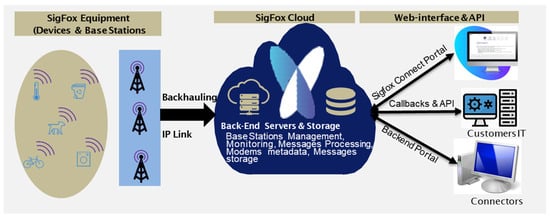
Figure 3. The flat architecture of SigFox.
2.3. Telensa
Telensa is a spin-off from Plextek Company in the UK. The scalable, private networks Telensa offers ensure high-value infrastructure options such as smart metering, smart lighting, and smart cities having the capacities they require. It has focused on specific IoT utilization states such as smart lighting of streets and urban data and succeeded, with a large global install base of connected street lighting devices. It has the same endpoint silicon similar to SigFox, although it has its own communication protocols. Telensa claims that millions of lights are being controlled using its technology, and their products are suited to smart homes and cities, tracking, detection, monitoring, and recovery [15].
2.4. Ingenu RPMA
Ingenu has created LPWAN technology under the RPMA standard, providing a significantly larger connection capacity than SigFox or LoRa. It is mainly developed for machine communications and offers many advantages over conventional IoT and M2M connectivity solutions. Each access point can cover up to 300+ square miles, which is a superior range compared with cellular technologies. Ingenu RPMA is a technology that has been developed from the ground up using novel modulation techniques to decrease overall ownership costs while extending the range and increasing the link capacity compared with SigFox and LoRa networks. RPMA technology penetrates deeper and wider with high scalability compared with other wireless technologies, as shown in Figure 4.
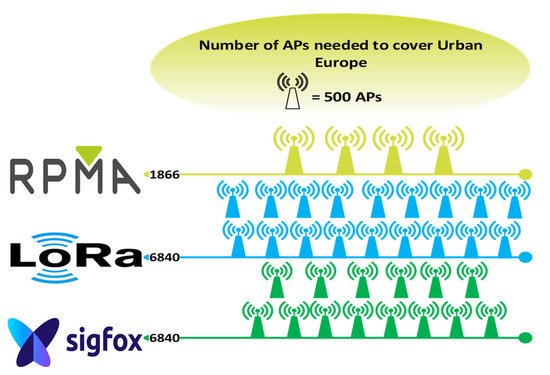
Figure 4. AP coverage and scalability comparison of Ingenu-RPMA vs. LPWAN.
2.5. LoRa
LoRa is a modulation technology patented and acquired by Semtech Corporation in 2012 for wireless communications [16]. LoRa was created to operate on a sub-GHz frequency, specifically on unlicensed bands such as 915 MHz, 868 MHz, or 433 MHz, in accordance with the regional area regulations. LoRa is a physical layer based on chirp spread spectrum (CSS) modulation, which is not similar to other modulations used in other wireless networks [17]. LoRa was designed to be low-rate, low-power, and transmit with very a long-range in line-of-sight or rural area situations up to 10 or 20 km outdoors as a result of the higher sensitivity of LoRa CSS modulation enabling long-distance connectivity [18]. Its low energy consumption, coupled with long-distance communication, makes LoRa one of the potential candidates of LPWAN technologies for IoT applications [19].
3. LoRaWAN Networking
With its star-of-stars network structure, LoRaWAN allows for secure bidirectional communication in both directions. Although LoRa/LoRaWAN technology offers many advantages in terms of low bit rate and power consumption, wide coverage, simplicity, the possibility of deploying a private network, security, and ease to manage due to its star-of-stars topology, recent studies have highlighted a number of potential issues with LoRa/LoRaWAN networks, particularly in terms of scalability in large-scale scenarios.
LoRaWAN is a cloud-based MAC layer networking protocol that is designed and maintained by the LoRa Alliance to define the upper layers of long-range wide-area networks with a LoRa physical layer. It is an LPWAN technology for battery-operated wireless connection of objects to the Internet in regional, national, or worldwide networks that aims at major IoT needs, including two-way communication, end-to-end protection, mobility, and localization. The LoRa physical layer supports long-range communication links, whereas the LoRaWAN protocol principally functions as a protocol to route the network layer between LoRaWAN gateways and LoRa devices. LoRaWAN also manages the data rate, communication frequencies, and transmission power for all nodes in the network, which are asynchronous and transmit data on demand. As shown in Figure 5, the transmitted data by an end device will be received by nearby gateways that forward the data payloads to the cloud server (The Things Network (TTN)) that is integrated into several IoT platforms.
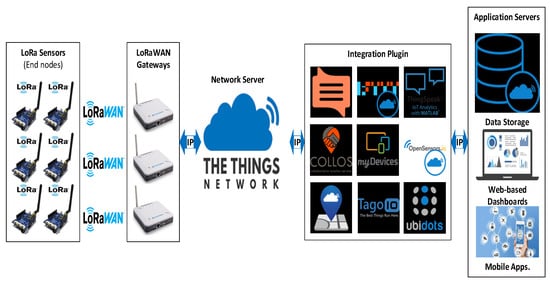
Figure 5. LoRaWAN network architecture.
4. LoRaWAN Issues and Recent Solutions
4.1. Power Consumption
There are three important characteristics of LPWAN that can meet the key requirements of IoT applications, which are high energy efficiency, large-scale deployment, and low cost. Power efficiency is a major parameter in improving a system’s lifetime. This criterion is well met by LoRa networks, where LoRa nodes can operate with minimum maintenance for a longer lifetime of up to 10 years. Among the obstacles for LoRa networking is, therefore, power consumption. The consumed energy of the end devices can be divided into two types: (1) the energy consumption of the micro-controller, which varies according to the chosen host board, and (2) the consumed energy by wireless transmissions, which depends entirely on the LoRa technology and node activity [9].
4.2. Pure Data Extraction
Improvement of the data extraction rate (DER) aims to enhance the network throughput. In [20], the authors modeled the uplink nodes’ activity using a mathematical model based on collected experimental data by implementing DER as a new metric for measuring LoRa network performance. The transmitted messages in a LoRa network should be received at the backend system. In other words, each transmitted message must be received by at least one LoRa gateway. Thus, the authors defined the DER metric as the ratio of received to transmitted messages in a defined interval. The obtained ratio of the DER is a function of the node or gateway locations, number, and activity. LoRa exhibits the capture effect since it is a form of frequency modulation. The capture effect happens when two signals with different strengths reach the receiver. If the difference in the signals’ strengths is too small, the receiver will not be able to decode any of the received signals. Thus, the study suggests adding more gateways to enhance the LoRa throughput.
4.3. Network Scalability
A number of studies focused on LoRaWAN network scalability. The scalability challenge of LoRaWAN installations occurs owing to the high number of end device request ACKs and the duty cycle constraint that the gateway must comply with. A lack of scalability may wreak havoc on the current scalability information, which is mostly commercial and assumes the best case scenario. In [20], the authors suggest adding more gateways to enhance LoRa scalability. The authors created a LoRa simulator, dubbed LoRaSim, based on the Python programming language. They terminated the network with a single gateway, which does not scale well with standard transmissions, while networks that automatically adjust the transmission parameters or have several gateways may scale better. The finding of the study is that LoRa network scalability increases if the ToA is minimized by the optimal configuration parameters as well. However, this model associates over-value attenuation in open space for LoRa ‘s signals. It needs to be evaluated on-site, as the majority of the coverage area includes conventional connections, which have been defined as connections to dynamic time links.
5. LoRaWAN Simulation Tools
5.1. LoRaSIM
LoRaSim has been developed based on SimPy as a discreet event simulator using Python to simulate, investigate, and analyze the LoRaWAN network scalability and collision functionality [20]. A radio propagation model is implemented in LoRaSim, depending on the well-known long-distance path loss model. The radio transceiver sensitivity at room temperature concerning various LoRa SF and BW settings is estimated. It also considers many related parameters, such as the thermal noise power across, receiver bandwidth, noise figure, and SNR. Several packages are required for running LoRaSim smoothly, such as matplotlib, SimPy, and NumPy. LoRaSim offers a plotted view of deployments with no graphical interface, as shown in Figure 6. In contrast, it can show a data plot when users execute graphical code. Many improvements for LoRaSim were proposed to make it multipurpose [21][22][23][24][25][26] and support the downlink due to the original version supporting only the uplink. Thus, it can test scalability and energy consumption, as well as other performance metrics. Much of the information is seen on the command line and exported to File-Name.dat, which can show its content data using other graphical programs such as Gnuplot, seaborn, Mplot, or others.

Figure 6. LoRaSim network topology deployment.
5.2. NS-3
Ns-3 is an open-source discrete-event network simulator that was initiated in mid-2006 [27][28] and is still under heavy development now, written in C++ and Python. The ns-3 simulator supports a wide variety of protocols such as Wi-Fi, LTE, IEEE 802.15.4, SigFox, LoRa, and further networks. It also implements IP networking, supporting both simulation and emulation using sockets that aim at academics and research [29]. The ns-3 can be executed with pure C++, and some simulation components can be written with Python. It is modular and can function in graphical and command-line interfaces NetAnim for C++ and PyViz for Python. It also produces Pcap tracks that can be used for debugging. Standard software such as Wireshark [30] can be used to read the trace files for network traffic analysis. The ns-3 simulator offers a practical and well-structured setting with animation support using NetAnim, as shown in Figure 7.
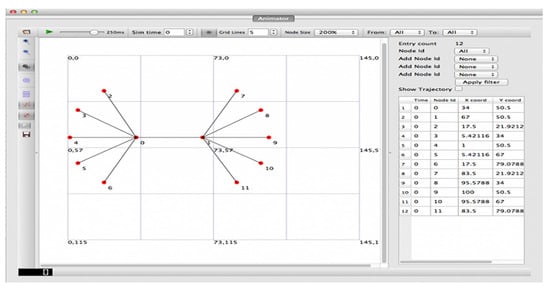
Figure 7. Ns-3 NetAnim environment.
5.3. FLoRa
A framework for a LoRa (FLoRa) simulator was developed to evaluate the LoRa network’s performance using the ADR mechanism. It proved the effectiveness of the ADR at increasing the PDR with improving energy efficiency. FLoRa is an end-to-end simulation framework for LoRa networks that relies on the OMNeT++ network simulator and also utilizes INET system components [31]. An open-source OMNeT++ library was designed to support the experimentation process for various network protocols. FLoRa code is created by C++, and it enables the development of LoRa networks that support the integration of LoRa nodes, gateways, and network server modules. Application logic can be implemented as separate modules that are linked to a network server. The network server and nodes support dynamic configuration parameters controlled via the ADR and considering collisions and the capture effect. The module includes an accurate modeling of the backhaul network and can simulate multiple gateways. At the end of the simulation, energy consumption statistics can be collected in each node and over the entire network [32].
References
- Sisinni, E.; Saifullah, A.; Han, S.; Jennehag, U.; Gidlund, M. Industrial internet of things: Challenges, opportunities, and directions. IEEE Trans. Ind. Inform. 2018, 14, 4724–4734.
- Jabbar, W.A.; Shang, H.K.; Hamid, S.N.; Almohammedi, A.A.; Ramli, R.M.; Ali, M.A. IoT-BBMS: Internet of Things-Based Baby Monitoring System for Smart Cradle. IEEE Access 2019, 7, 93791–93805.
- Jabbar, W.A.; Bin Yuzaidi, M.A.; Yan, K.Q.; Bustaman, U.S.B.M.; Hashim, Y.; AlAriqi, H.T. Smart and green street lighting system based on arduino and RF wireless module. In Proceedings of the 8th International Conference on Modeling Simulation and Applied Optimization (ICMSAO), Piscataway, NJ, USA, 15–17 April 2019; pp. 1–6.
- Jabbar, W.A.; Saad, W.K.; Hashim, Y.; Zaharudin, N.B.; Abidin, M.F.B.Z. Arduino-based buck boost converter for PV solar system. In Proceedings of the 2018 IEEE Student Conference on Research and Development (SCOReD), Selangor, Malaysia, 26–28 November 2018; pp. 1–6.
- Jabbar, W.A.; Kian, T.K.; Ramli, R.M.; Zubir, S.N.; Zamrizaman, N.S.M.; Balfaqih, M.; Shepelev, V.; Alharbi, S. Design and fabrication of smart home with internet of things enabled automation system. IEEE Access 2019, 7, 144059–144074.
- Wang, H.; Fapojuwo, A.O. A Survey of enabling technologies of low power and long range machine-to-machine communications. IEEE Commun. Surv. Tutor. 2017, 19, 2621–2639.
- Wang, Y.-P.E.; Lin, X.; Adhikary, A.; Grovlen, A.; Sui, Y.; Blankenship, Y.W.; Bergman, J.; Shokri-Razaghi, H. A primer on 3GPP narrowband internet of things. IEEE Commun. Mag. 2017, 55, 117–123.
- Zuniga, J.C.; Ponsard, B. Sigfox System Description. Available online: https://www.ietf.org/proceedings/97/slides/slides-97-lpwan-25-sigfox-system-description-00.pdf (accessed on 20 October 2021).
- Sundaram, J.P.S.; Du, W.; Zhao, Z. A Survey on LoRa Networking: Research Problems, Current Solutions, and Open Issues. IEEE Commun. Surv. Tutor. 2019, 22, 371–388.
- Jabbar, W.A.; Ismail, M.; Nordin, R. MBA-OLSR: A multipath battery aware routing protocol for MANETs. In Proceedings of the 2014 5th International Conference on Intelligent Systems, Modelling and Simulation, Langkawi, Malaysia, 27–29 January 2014; pp. 630–635.
- Ikpehai, A.; Adebisi, B.; Rabie, K.M.; Anoh, K.; Ande, R.E.; Hammoudeh, M.; Gacanin, H.; Mbanaso, U.M. Low-power wide area network technologies for internet-of-things: A comparative review. IEEE Internet Things J. 2018, 6, 2225–2240.
- Rupe, J.; Weil, T. Routing in LoRaWAN: Overview and Challenges. IEEE Commun. Mag. 2020, 58, 72–76.
- Qin, Z.; Qin, Z.; Li, F.Y.; Li, G.Y.; McCann, J.A.; Ni, Q. Low-power wide-area networks for sustainable IoT. IEEE Wirel. Commun. 2019, 26, 140–145.
- Gomez, C.; Veras, J.C.; Vidal, R.; Casals, L.; Paradells, J. A sigfox energy consumption model. Sensors 2019, 19, 681.
- Telensa. Global Smart Street Lighting & Smart Cities: Market Forecast (2020–2029). 2021. Available online: http://www.telensa.com (accessed on 21 October 2021).
- Hornbuckle, C.A. Fractional-N Synthesized Chirp Generator. U.S. Patent 7791415B2, 7 September 2010.
- Semtech. SX1272/3/6/7/8: LoRa Modem Designer’s Guide. 2013. Available online: www.semtech.com (accessed on 21 October 2021).
- Attia, T.; Heusse, M.; Tourancheau, B.; Duda, A. Experimental characterization of LoRaWAN link quality. In Proceedings of the 2019 IEEE Global Communications Conference (GLOBECOM), Waikoloa, HI, USA, 9–13 December 2019; pp. 1–6.
- Bouguera, T.; Diouris, J.F.; Chaillout, J.J.; Jaouadi, R.; Andrieux, G. Energy consumption model for sensor nodes based on LoRa and LoRaWAN. Sensors 2018, 18, 2104.
- Bor, M.C.; Roedig, U.; Voigt, T.; Alonso, J.M. Do LoRa low-power wide-area networks scale? In Proceedings of the 19th ACM International Conference on Modeling, Analysis and Simulation of Wireless and Mobile Systems, Malta, Malta, 13–17 November 2016; pp. 59–67.
- Abdelfadeel, K.; Farrell, T.; Pesch, D. How to Make Firmware Updates over LoRaWAN Possible. In Proceedings of the 2020 IEEE 21st International Symposium on A World of Wireless, Mobile and Multimedia Networks (WoWMoM), Cork, Ireland, 31 August–3 September 2020; pp. 16–25.
- Abdelfadeel, K.Q.; Abdelfadeel, K.Q.; Zorbas, D.; Cionca, V.; Pesch, D. FREE $—Fine-grained scheduling for reliable and energy-efficient data collection in LoRaWAN. IEEE Internet Things J. 2019, 7, 669–683.
- Farooq, M.O.; Pesch, D. Poster: Extended LoRaSim to Simulate Multiple IoT Applications in a LoRaWAN. In Proceedings of the International Conference on Embedded Wireless Systems and Networks (EWSN), Madrid, Spain, 14–16 February 2018.
- Ali, M.A.; Mailah, M.; Jabbar, W.A.; Moiduddin, K.; Ameen, W.; Alkhalefah, H. Autonomous Road Roundabout Detection and Navigation System for Smart Vehicles and Cities Using Laser Simulator–Fuzzy Logic Algorithms and Sensor Fusion. Sensors 2020, 20, 3694.
- Zorbas, D.; Caillouet, C.; Hassan, K.A.; Pesch, D. Optimal data collection time in LoRa networks—A time-slotted approach. Sensors 2021, 21, 1193.
- Zorbas, D.; Kotzanikolaou, P.; Pesch, D. TS-LoRa: Time-slotted LoRaWAN for the industrial internet of things. Comput. Commun. 2020, 153, 1–10.
- Henderson, T.R.; Roy, S.; Floyd, S.; Riley, G.F. ns-3 project goals. In Proceedings of the 2006 workshop on ns-2: The IP network simulator-WNS2 ’06, Pisa, Italy, 10 October 2006; ACM Press: New York, NY, USA, 2006; p. 13.
- Simulator, N. Available online: https://www.nsnam.org (accessed on 20 October 2021).
- Van den Abeele, F.; Haxhibeqiri, J.; Moerman, I.; Hoebeke, J. Scalability analysis of large-scale LoRaWAN networks in ns-3. IEEE Internet Things J. 2017, 4, 2186–2198.
- Bilalb, S.M.; Othmana, M. A performance comparison of network simulators for wireless networks. arXiv 2013, arXiv:1307.4129.
- Mariusz Slabicki, G.P.; Di Francesco, M. FLoRa—Framework for LoRa. Available online: https://omnetpp.org/download-items/FLoRA.html (accessed on 22 October 2021).
- Available online: https://flora.aalto.fi/ (accessed on 19 October 2021).
More
Information
Contributor
MDPI registered users' name will be linked to their SciProfiles pages. To register with us, please refer to https://encyclopedia.pub/register
:
View Times:
1.6K
Revisions:
2 times
(View History)
Update Date:
21 Jan 2022
Notice
You are not a member of the advisory board for this topic. If you want to update advisory board member profile, please contact office@encyclopedia.pub.
OK
Confirm
Only members of the Encyclopedia advisory board for this topic are allowed to note entries. Would you like to become an advisory board member of the Encyclopedia?
Yes
No
${ textCharacter }/${ maxCharacter }
Submit
Cancel
Back
Comments
${ item }
|
More
No more~
There is no comment~
${ textCharacter }/${ maxCharacter }
Submit
Cancel
${ selectedItem.replyTextCharacter }/${ selectedItem.replyMaxCharacter }
Submit
Cancel
Confirm
Are you sure to Delete?
Yes
No




